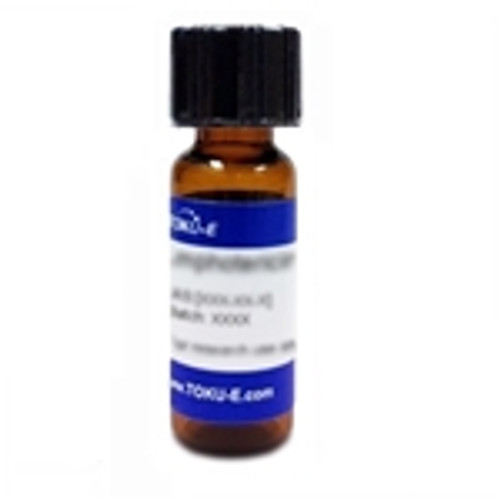Micrococcin P1 is a macrocyclic thiopeptide originally isolated from Micrococcus sp. by Su (Oxford) in 1948 and is considered the founding member of the thiopeptide antibiotic family. It was purified by Heatley and Doery but the producing strain was lost, causing a hiatus in research of this antibiotic family until the discovery of the related thiocillins in 1976. Its precise structure remained undefined until 2010 when researchers at University of British Columbia (Vancouver, BC) synthesized a substance that was spectroscopically and polarimetrically identical to the natural product.
Thiopeptides, characterized by posttranslationally formed sulfur- and nitrogen-containing heterocycles, constitute a rapidly expanding class of RiPP antibiotics (Ribosomally synthesized and postranslationally modified peptides), and they hold promise for natural product engineering. Micrococcin P1 has antibacterial, antiprotozoal, and gene-modulating activity. It shares a structure and intracellular target with Micrococcin P2 but differs only by two hydrogen atoms.
Micrococcin P1 is soluble in ethanol, methanol, DMF or DMSO.
| Molecular Formula | C48H49N13O9S6 |
| Spectrum | Micrococcin P1 has activity against Gram-positive bacteria, protozoa, and Mycobacteria (ie. M. tuberculosis) |
| Mechanism of Action | Micrococcin P1 is an acceptor-site-specific inhibitor of ribosomal protein synthesis, preventing the growth of Gram-positive bacteria. It inhibits the elongation step of protein synthesis in mycobacteria, structural studies suggest it binds to the cleft between the 23S rRNA and L11 protein loop, thus interfering with the binding of elongation factors Tu and G, and inhibiting protein translocation. |
| Cancer Applications | Micrococcin and other synthetic precursors were used in in vivo anti-cancer assays. Microccoccin was not found to have significant anti-cancer activity, although several smaller fragments had micromolar to high nanomolar potency. This indicates a broader scope of activity in the family, and medicinal chemistry efforts to explore these fragments can be explored (Christy, 2019). |
| References |
Christy MP (2019) Total synthesis and anti-cancer activity of Micrococcin P1 and synthetic fragments. phD dissertation. UC San Diego, San Diego CA ProQuest ID: Christy_ucsd_033D_18355 Ciufolini MA and Lefranc D (2010) Micrococcin P1: Structure, biology and synthesis. Nat. Prod. Reports 27(3):330-342 PMID 20179875 Degiacomi G et al (2016) Micrococcin P1- A bactericidal thiopeptide active against Mycobacterium tuberculosis. Tuberculosis (Edinb). 100:95-101 PMID 27553416 Heatley NG and Doery HM (1951) The preparation and some properties of purified micrococcin.. Biochem. J. 50:247 PMID 14904401 Shoji J, Hinoo H, Wakisaka Y, Koizumi K, and Mayama M (1976) Isolation of three new antibiotics, thiocillins I, II and III, related to micrococcin. P. Studies on antibiotics from the genus Bacillus. VIII. Antibiot. (Tokyo) 29(4):366-374 PMID 819410 Su TL (1948) Antibiotic-producing organisms in faeces and sewage. Brit. J. Exp. Path. 29:466 PMID 18108414 |




